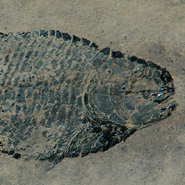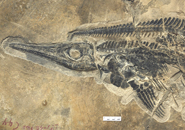Some 250 million years ago, at the end of the time known as the Permian, life was all but wiped out during a sustained period of massive volcanic eruption and devastating global warming. Only one in ten species survived, and these formed the basis for the recovery of life in the subsequent time period, called the Triassic. The new fossil site – at Luoping in Yunnan Province – provides a new window on that recovery, and indicates that it took about 10 million years for a fully-functioning ecosystem to develop.
‘The Luoping site dates from the Middle Triassic and contains one of the most diverse marine fossil records in the world,’ said Professor Benton. ‘It has yielded 20,000 fossils of fishes, reptiles, shellfish, shrimps and other seabed creatures. We can tell that we’re looking at a fully recovered ecosystem because of the diversity of predators, most notably fish and reptiles. It’s a much greater diversity than what we see in the Early Triassic – and it’s close to pre-extinction levels.’
Reinforcing this conclusion is the complexity of the food web, with the bottom of the food chains dominated by species typical of later Triassic marine faunas – such as crustaceans, fishes and bivalves – and different from preceding ones.
Just as important is the ‘debut’ of top predators – such as the long-snouted bony fish Saurichthys, the ichthyosaur Mixosaurus, the sauropterygian Nothosaurus and the prolacertiform Dinocephalosaurus – that fed on fishes and small predatory reptiles.
Professor Shixue Hu of the Chengdu Group said: ‘It has taken us three years to excavate the site, and we moved tonnes of rock. Now, with thousands of amazing fossils, we have plenty of work for the next ten years!’
‘The fossils at Luoping have told us a lot about the recovery and development of marine ecosystems after the end-Permian mass extinction,’ said Professor Benton. ‘There’s still more to be discovered there, and we hope to get an even better picture of how life reasserted itself after the most catastrophic global event in the history of our planet.’

